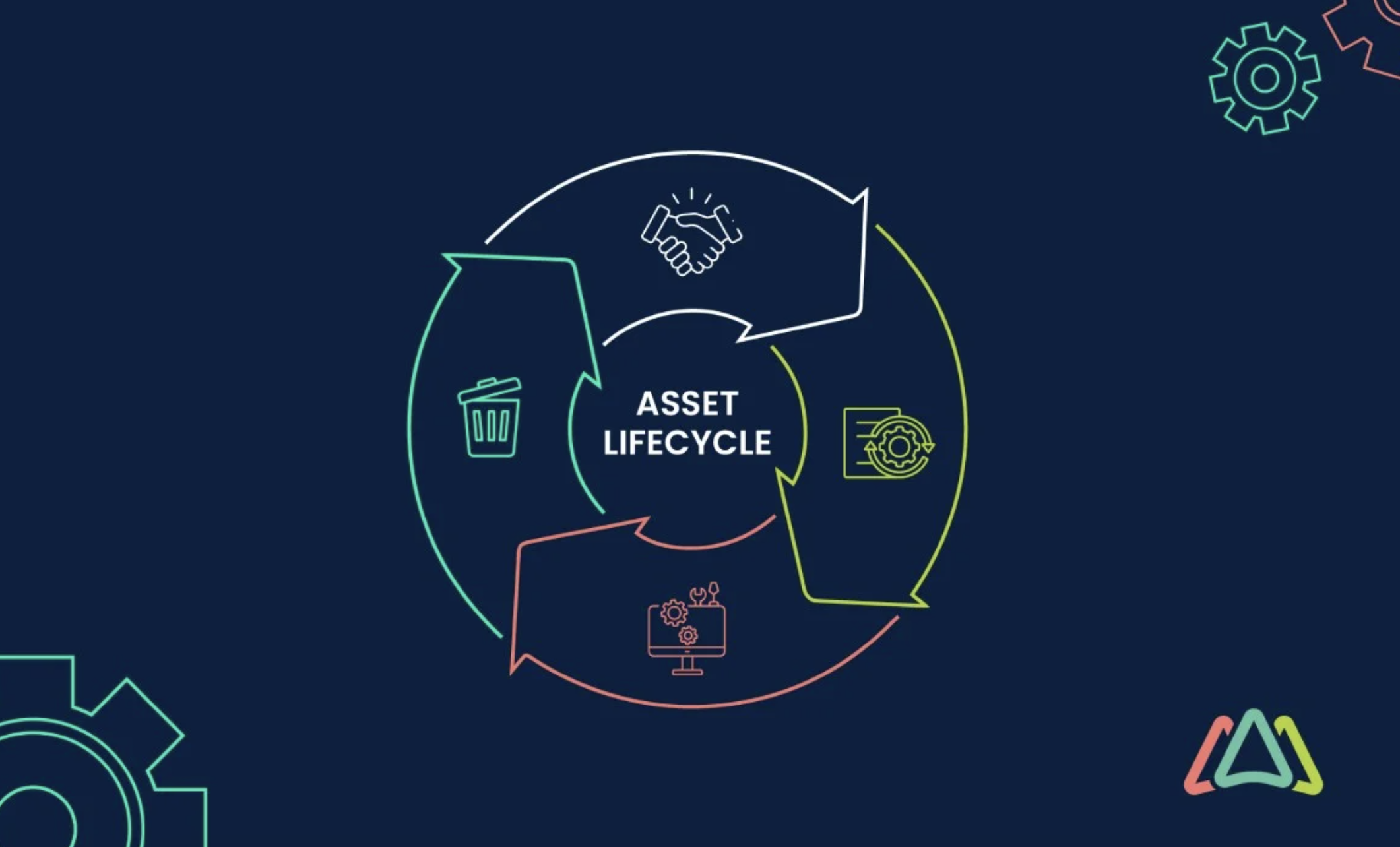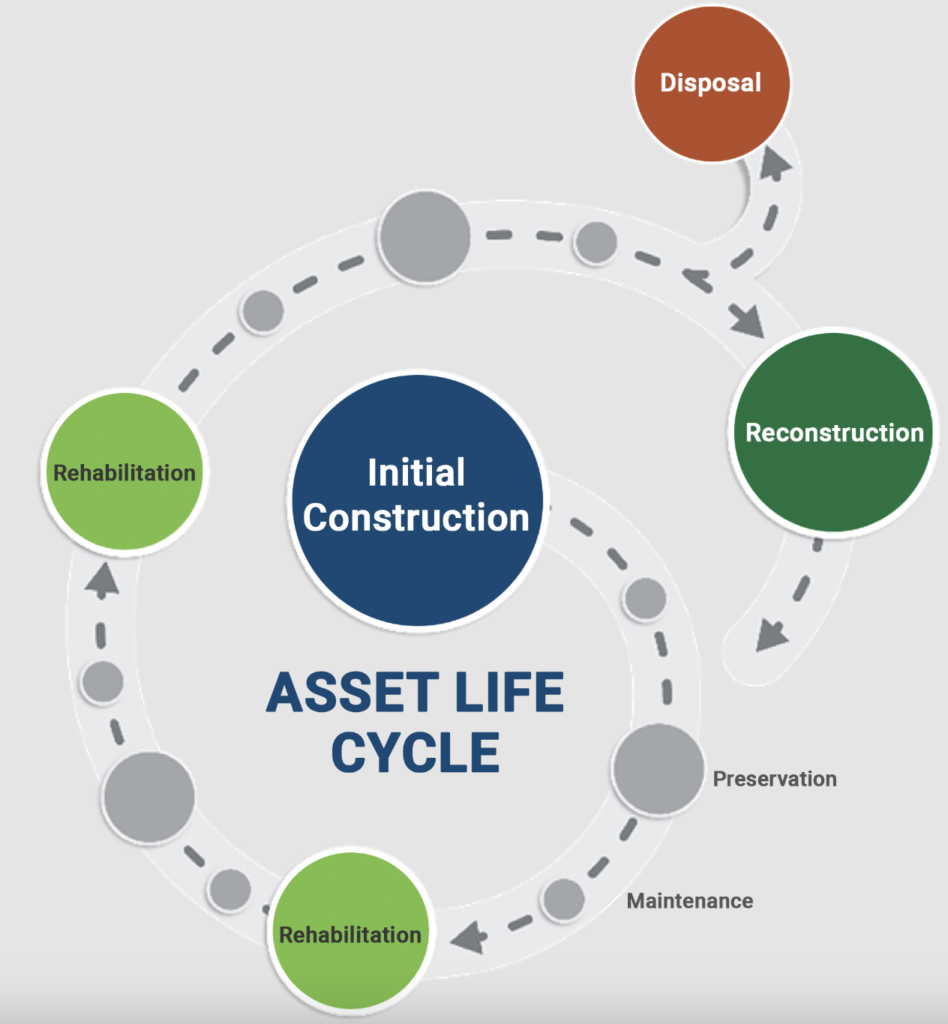
IT Asset Lifecycle Management (Image by Clickmaint)

IT Asset Lifecycle Management (Image by Clickmaint)
IT Asset Lifecycle Management is a framework for managing and optimizing the life of your technology assets.
As a framework, IT Asset Lifecycle Management (ALM) acts as a guide for an asset from acquisition to retirement.
This IT ALM framework is critical because it impacts your operational efficiency, cost management and compliance.
Meanwhile, in a broader scope, IT Lifecycle Management (ITLM) is a detailed and holistic roadmap to guide you through planning, deploying, maintaining, optimizing, and retiring.
With ALM, you’ll strategically manage IT at every stage to maximize value and minimize risk.
With ALM, you can track and understand how each asset contributes to your business goals.
Implementing ALM effectively means that your IT infrastructure is always aligned with business needs, ensuring that you don’t overspend and that each asset is used to its full potential.
IT ALM is a comprehensive framework where staying current and efficient is the key to staying relevant. And here’s where we talk about IT ALM in detail.
With IT ALM in your toolkit, you become the ultimate in efficiency, security, and that most coveted of treasures: cost control. Let’s explore three key benefits that make ALM worth its wallet.
IT Asset Management Lifecycle ensures that you’re not overinvesting in unused or underutilized assets.
IT ALM provides a clear view of what’s needed and what’s excess, enabling better budgeting and resource allocation.
This visibility not only curbs unnecessary spending, but also increases your ROI on each asset.
Through diligent tracking and management, IT ALM significantly reduces the risks of non-compliance with software licenses and regulatory standards.
ALM keeps your IT infrastructure within legal boundaries, minimizing the risk of financial penalties and legal repercussions.
This approach proactively monitors and maintains IT assets, ensuring they perform optimally throughout their lifecycle.
IT ALM helps in timely upgrades and maintenance, reducing downtime and extending the useful life of assets. This not only ensures efficiency but also supports uninterrupted business operations.
Every piece of equipment, be it a server, laptop, or software, has a distinct role, and maintaining them in peak condition is essential for ensuring efficiency and precision.
This is the role of IT Asset Lifecycle Management (ALM), which steers you through every phase of their lifecycle, from the initial purchase to their eventual retirement.
So, let’s take a closer look at the five crucial stages, and see how becoming proficient in them turns you into a master builder of efficiency and security.
The initial stage is where you define the need for new IT assets. This involves understanding your business objectives and how specific IT assets can help achieve these goals.
It’s about analyzing requirements, forecasting future needs, and planning accordingly.
This stage sets the foundation for informed decision-making, ensuring that any investment in IT assets aligns with your long-term strategy and operational needs.
Once the need is established, the next step is acquiring the IT assets.
This includes purchasing hardware and software and implementing them within your IT infrastructure.
This stage is crucial for ensuring that the assets are compatible with your existing systems and that they are set up for optimal performance.
Effective acquisition and implementation can save time and resources in the long run.
In this phase, the focus is on managing the day-to-day operations of the IT assets. It involves monitoring performance, ensuring security, and providing necessary maintenance or updates.
Operational management is key to maximizing the efficiency and lifespan of the assets, thus supporting uninterrupted business activities and reducing the likelihood of unforeseen expenses due to asset failure.
When IT assets reach the end of their useful life, they need to be decommissioned and disposed of securely and responsibly.
This stage involves removing the assets from your active systems, ensuring that all data is securely erased, and disposing of the hardware in an environmentally friendly way.
Proper decommissioning and disposal are essential to maintain data security and compliance with environmental regulations.
This ongoing process involves reviewing the performance of IT assets and the asset management process itself.
It’s about learning from what’s working and what isn’t, and making adjustments to improve efficiency and effectiveness.
Regular performance review helps in identifying opportunities for cost savings, better asset utilization, and overall improvements in IT asset lifecycle management.
There’s no one-size-fits-all solution when we start getting into the real world of asset lifecycle management (ALM) best practices.
You see, the “ideal” set of ALM practices isn’t set in stone. In fact, it’s more of a fluid concept that bends and flexes based on what’s going on in your organization.
Consider the size and complexity of your organization. A small startup will have different needs and capabilities than a multinational corporation.
Then consider the types of assets you’re juggling. Are you dealing with high-end technology or more basic equipment? Each requires a different handling strategy.
Don’t forget the industry you’re playing in and the regulatory hoops you need to jump through. Compliance in finance is a whole different ball game from, say, retail.
Plus, there’s your organization’s culture and risk tolerance to think about. Some companies love to ride the edge, while others prefer playing it safe.
So, what’s the game plan? Flexibility and scalability are your best friends here. It’s about adopting ALM practices that can grow and evolve with your business.
And remember, these aren’t set in stone. Feel free to tweak, toss, add, or morph these practices to fit your unique business landscape. It’s all about making ALM work for you, not the other way around.
Strategic procurement in IT asset lifecycle management focuses on acquiring assets that precisely meet your needs.
It’s about avoiding the trap of extra features that inflate costs without adding value.
This process involves a deep understanding of what your organization truly needs, followed by thorough market research to find the best vendors.
Effective negotiation skills are key here to ensure you’re getting the best deal, not just in terms of cost but also in quality and service.
Standardizing configurations is also crucial as it simplifies integration and future management, creating a more streamlined IT environment.

Efficient deployment in ALM means setting up new assets quickly and without hiccups. It’s about minimizing downtime and ensuring that users aren’t left waiting or frustrated.
Part of this involves configuration validation, where you double-check settings and integrations to ensure they align with your operational requirements.
Also, activating security measures, like firewalls and antivirus software, right from the start is essential to protect your new assets against threats.
Resource allocation tracking is crucial for spotting underutilized assets. By monitoring how resources are used, you can redeploy assets more effectively, enhancing your return on investment.
Performance monitoring involves keeping an eye on how well your assets are functioning and identifying any issues before they escalate into bigger problems.
Managing software licenses efficiently ensures you’re not overspending on unnecessary renewals and staying compliant with usage terms.
Keeping your software updated is vital for both functionality and security. Regularly applying patches and updates helps avoid vulnerabilities.
Predictive maintenance means scheduling routine checks to anticipate issues before they occur.
Monitoring the health of your hardware helps you plan replacements in a timely manner, avoiding unexpected failures.
When retiring IT assets, data sanitization is crucial to protect sensitive information and comply with privacy regulations.
Disposing of hardware in an environmentally responsible way is not only good for the planet but often a compliance necessity.
Ensuring that software licenses are terminated with the retirement of assets helps avoid ongoing costs for resources no longer in use.
Automation in ALM is about having those repetitive tasks – like getting new team members on board, keeping your software up to date, and keeping an eye on all your assets – running smoothly without much fuss.
This way, you’re not just cranking up efficiency but also slashing the chances of those pesky human errors.
Plus, your IT team gets to focus on the big stuff, the kind of work that really moves the needle.
Centralized is all your asset details, every single piece of information from when it was bought, its warranty details, to how it’s set up, all stored neatly in one place.
So, this centralized data management is more than keeping things organized. Centralized data management makes pulling up data for those sudden audits or important decisions a walk in the park.
And the best part? Everyone from your team stays in the loop about the status of each asset, fostering a sense of unity and collaboration.
In the world of ALM, there’s no standing still. Are there hiccups in the process? Is there a way to make things smoother?
This constant review helps you stay on your toes, ensuring your ALM game is always top-notch.
It’s also about diving into the data, uncovering the story it tells about your practices, and using that intel to make smarter decisions.
And hey, let’s not forget the power of feedback – getting insights from those on the ground and from other stakeholders is like striking gold for continual improvement.
Stakeholder engagement starts with making sure your team knows the ins and outs of using and reporting on the assets – a bit of training goes a long way.
Clear, open communication lines are crucial too; it keeps everyone from top brass to your newest team member informed about the whats and hows of your ALM policies.
And remember, ALM isn’t a solo sport; it’s a team game. So, getting departments like procurement, finance, and security to play along in harmony is key to a winning strategy.
Technology is more just about automating the mundane. Technology is your command center for managing data and getting sharp insights into your asset portfolio.
But why stop there? Tap into the power of reporting and analytics tools to get a deeper understanding of how your assets are performing and where you can crank up efficiency.
And in this ever-evolving tech landscape, keeping your finger on the pulse of the latest industry trends and best practices is essential to keep your ALM strategy not just running, but sprinting ahead.
As we’ve traveled through the intricacies of IT asset lifecycle management (ALM), it’s clear that the landscape is evolving.
Navigating this terrain requires more than traditional approaches; it requires a robust, adaptive strategy. That is why you can look at Octobits, a kind of light in the complex world of ALM.
Octobits ability to align with diverse business needs and streamline ALM processes is a game changer.
The key takeaway? Incorporating tools like Octobits into your ALM strategy isn’t just a good move, it’s essential to staying ahead in 2024.
By leveraging such innovative solutions, firms can strengthen their ALM framework and ensure efficiency, compliance, and cost-effectiveness.
So as we gear up for another year, let’s strengthen our ALM practices with tools that are built for the future.